Cement vs. Concrete: What’s the Difference?
-
Pete Ortiz
- Last updated:
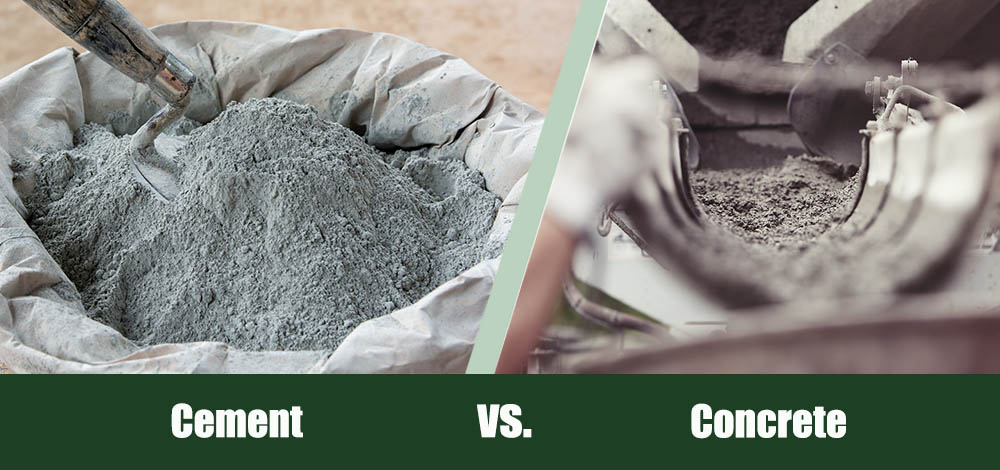
Many times, the terms “concrete” and “cement” are used synonymously. The two terms can be quite confusing, especially for beginner DIYers. Even though these two are used interchangeably, they are different with varying applications. Thus, it’s important to understand their fundamental differences to use them correctly in your construction project.
This article will highlight the main differences between concrete and cement in terms of their uses and material makeup. Read on to learn more.
Overview of Concrete
Basically, concrete is a mixture of paste and aggregates. The aggregates are made up of crushed stone, sand, or gravel, while the paste is made from Portland cement and water. As concrete ages, it gets stronger, making it an ideal material for the construction of permanent structures. It is mainly used in building concrete slabs, foundation walls, patios, and other structures.
Concrete is a versatile building material because it transforms from a simple dry mixture to a semi-liquid form that allows molding to various shapes. Once it dries up, it forms a hard material that we all know as concrete. Usually, concrete structures are reinforced with metals, such as rebar or wire mesh, for added strength and to prevent cracking common in solid concrete.
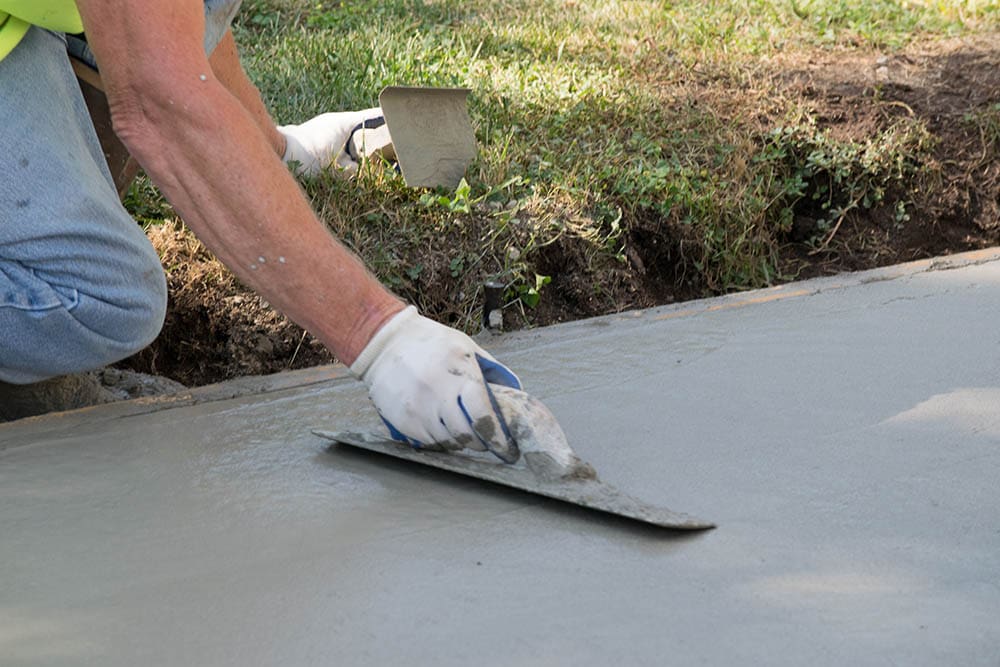
How Is It Made?
The aggregates used in the making of concrete are medium-grained and coarse materials. When water is added to the cement, aggregate, and gravel mixture, it activates the cement, which is responsible for binding the mix into a solid form.
It takes about 28 days for concrete to cure and develop its full strength. However, you can opt to purchase ready-to-use concrete mixes usually sold in bags that combine gravel, sand, and cement.
What Is It Good For?
As earlier mentioned, concrete is the primary material used in the construction industry. It’s cheap and has high durability. It’s mainly used to build bridges, sidewalks, fences, driveways, and many more construction projects.
Concrete mix bags are ideal for small projects such as constructing small pads or steadying fence posts. For larger projects, you may have to buy cement bags and mix them with gravel and sand using a large container or a wheelbarrow. Alternatively, you can order a delivery of pre-mixed concrete. Pre-mixed concrete mixes retail in several types, ranging from the usual gravel mix to sand mix that utilizes fine sand that almost resembles mortar in texture.
Remember, the type of cement used in concrete will influence the strength and the setting time of the material that develops. Type one cement is popularly used for most construction projects; however, type three is used in precast shapes because its fast curing time allows workers to remove reusable forms quickly. You can also add agents called admixtures to your concrete to improve their general characteristics.
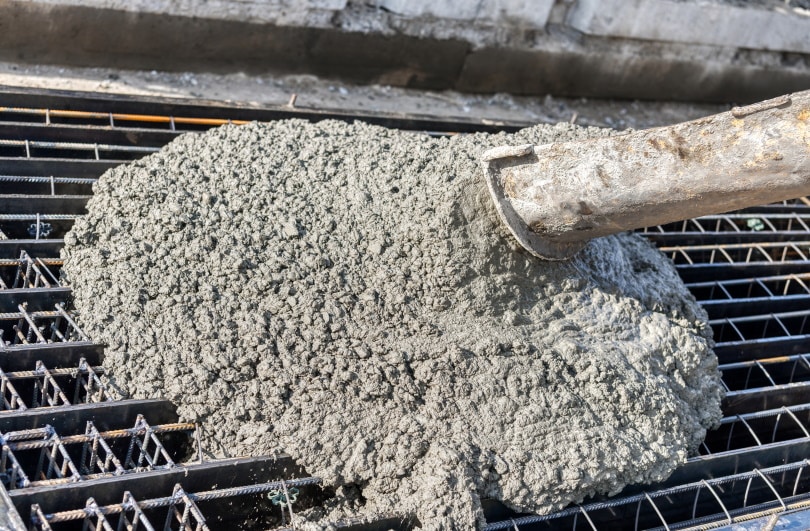
Types of Concrete
The most common concrete variations on the market today are plain concrete, normal concrete, and lightweight concrete. In a nutshell, the different variations of concrete are determined by the ratio at which you mix water, gravel/sand, and cement.
- Ingredients are readily available in most hardware and DIY stores.
- Can be molded into any desired shape and is highly durable.
- Great soundproofing material.
- Requires minimal to zero maintenance
- Can withstand extreme temperature conditions
- The tensile strength is comparatively low compared to that of cement
- May have soluble salts, and since it is less ductile, it can force the deposits to resurface
- Concrete has less strength than it has weight
Overview of Cement
Cement, also known as Portland cement, is a fine binding agent that cannot be used alone. It is the main component in concrete, very fluid and flexible, allowing workers to mold and use it to make a variety of structures.

How Is It Made?
Basically, cement is an adhesive powder, usually created by crushing limestone and clay. These materials act as glue to bond concrete together. Besides clay and limestone, cement is also made from materials such as glass, sand, stone, and chalk. They are crushed into a powdery form and burned to remove impurities. When you add some water to the powder, you get what we commonly refer to as cement. However, cement cannot be used on its own.
Initially, cement was made from crushed rock, bricks, limestone, and volcanic ash. However, today, Portland cement is the most widely used and readily available type of cement retailing in the market. It is a budget-friendly construction material, mostly because of its availability.
A product of shales and limestone, Portland cement derives its name from its point of origin: the island of Portland in England. It was introduced by Joseph Aspdin after realizing how hard cement gets after mixing the powder with water.
Uses of cement
Cement is the main ingredient in making adhesives, grout, joint compounds, and many more construction materials. When mixed with water, you can make mortar for bricklaying projects or even grout strong enough to lay your kitchen tiles.
Furthermore, there is also a hydraulic cement type used in concrete or masonry to prevent water leaks. The waterproofing abilities of the fast-hardening cement make it ideal for use in wet conditions.
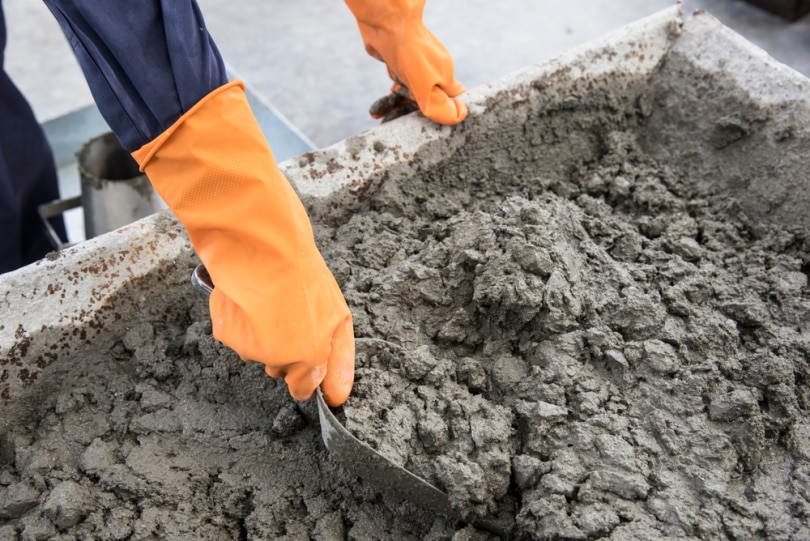
Types of Cement
According to the Portland Cement Association, eight types of Portland cement retail in the market. Each is designed to cater to different chemical and physical requirements.
- Type 1: This is considered a general-purpose cement suitable for most applications.
- Type II: This is mainly used to build structures in soil and water and contains some trace amounts of sulfate.
- Type II (MH): This cement type generates some heat during the curing process and may be slightly sulfate resistant.
- Type III: This type of cement is strong in its early state. The early strength can last for about a week or less.
- Type IV: This cement is good at moderating heat generated during the hydration process. It is ideal for building large concrete structures such as bridges and dams.
- Type V: This cement type can withstand chemical attacks by water and soil rich in sulfates.
- Types IA, IIA, I (MH) A, and IIIA: These cement varieties are ideal for making air-entrained type concrete. They may share similar properties with cement types I, II, II (MH), and III; however, they have fewer air-entraining materials inside them.
- Impressive binding strength
- Easily acquired
- Suitable for structural elements that require high strength during the early stages of the curing process
- Not ideal for large-scale construction projects
- Lower durability compared to concrete
- Prone to cracking
- Difficult to cure
Cement vs. Concrete: What Are the Main Differences?
As you may have gathered by now, cement is an ingredient of concrete. A concrete mix contains 15% cement and is made through a hydration process where water is used as a binding agent. However, cement and concrete do share some similarities and key differences.
Below is a quick rundown of their distinctions:
Composition
While cement comes from clay and limestone, concrete is a composite material consisting of gravel, sand, or crushed stones (aggregates), Portland cement (a binding agent), and water. Concrete may also contain extra materials, such as chemicals and reinforced steel, to improve resistance to pests and weather and to assist in the curing.
There is not much difference between the two in terms of composition. Yet, the ingredients that make up cement can vary in composition depending on the type of cement you are making.
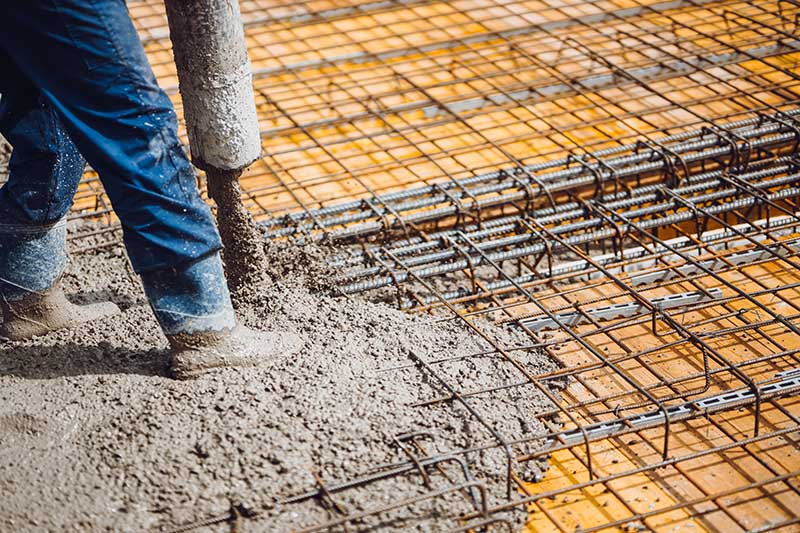
Strength and Durability
Cement is made by adding finely ground powder to water to make a paste. When the paste hardens, it can bind other construction materials together to create durable structures. The same process is used to make strong and durable concrete structures. However, while both can make durable structures, concrete is significantly stronger than cement.
Concrete is considered to be much stronger than cement. It has a stellar reputation as a construction material that can last for hundreds of years after application. This makes it suitable for the construction of high-strength structures such as floors, walls, foundations, and driveways.
In contrast, cement is ideal for lower-strength applications such as making mortar or grout. Cement is also harder to work with, especially for novice DIYers, because it dries faster once mixed and is quite tasking to create an even mix. So, concrete is a better option if your main priority is constructing strong and durable structures.
Cost
The price of your building materials is an important consideration when choosing the materials required for your projects. Cement may be more expensive than concrete, but its price will depend on the quality of the initial materials used and the area you purchased them. Generally, a cubic cement yard costs between $25 to 35$, while a cubic concrete yard retails from $50 to 65$.
Appearance
At first glance, cement appears as a powdery dry substance and is sold in air-tight bags at most hardware stores. On the other hand, concrete is a paste created by mixing sand, gravel, water, and cement. When the paste hardens, the ingredients produce a hard stone-like material that is durable and strong enough for use in the construction industry.

Ease of Use
A key difference between the two construction materials is their ease of use. If you want to build with concrete, you need to mix two parts sand, three parts gravel, and one-part cement. Then add water until the mixture has an even consistency. As you can see, mixing concrete is a somewhat tasking process and thus is not recommended for big construction projects.
You might need to hire a professional construction worker to assist you in your concrete construction projects. However, amateur DIYers can easily use concrete for small home improvement projects, such as lawn edging and installing kitchen countertops.
Another noteworthy difference is the fact concrete tends to harden after drying while the cement dries first before hardening. So, if your project involves wet cement, you must be cautious not to disturb it until it is fully dry. If you do, you may have to scrape off your entire project and begin from scratch. This makes cement suitable for small projects such as repairing minor cracks or dents on concrete surfaces.
Environmental Impact
As the world steadily embraces green construction methods, people are now more than ever concerned about the environmental impact of their construction materials. The cement production industry is one of the major contributors to greenhouse gas emissions in the environment. The gases are produced by a chemical process involved in obtaining calcium oxide from limestone.
The production of concrete also contributes to the greenhouse effect by releasing carbon dioxide when water is mixed with cement and accompanying aggregates.
So, it makes sense to opt for concrete as a sustainable building material. It can withstand extreme weather conditions and becomes stronger as it ages. Furthermore, old structures can be dismantled and the concrete used to form new components. Also, it is an energy-efficient option because it can absorb heat. This is perhaps why most people prefer to use concrete floors and walls as green construction alternatives.
Conclusion
When “cement” and “concrete” are used interchangeably, they can be quite confusing, especially for beginner DIYers in the construction industry. However, these two materials have key differences and similarities which are easy to spot. Understanding the fundamental differences will help you choose a suitable material for your construction projects. It will also help you as you consult with professional construction workers.
Concrete is a popular choice for construction material because it is a robust and versatile medium with uses globally. It comes in many forms, but your choice will depend on your application method. Concrete can be mixed with large coarse aggregates and is ideal for larger construction projects that require high compressive strength.
Cement is one of the vital ingredients of a concrete mix and is equally important in construction. It is made up of smaller aggregates such as sand and is better for smaller construction projects where fluidity is the main concern. We trust that our comparison between cement and concrete will give you a better understanding of concrete design principles in the hope that you will get a material best suited to your needs.
- https://www.cement.org/cement-concrete/cement-and-concrete-basics-faqs
- https://quikspray.com/mixing-concrete-in-a-5-gallon-bucket/
- https://www.permacastwalls.com/sustainable-building-materials-top-5
- http://www.nmrca.org/
- https://www.homenish.com/cement-vs-concrete/
- https://www.ccagc.org/resources/whats-the-difference-between-cement-and-concrete/
Featured Image Credit: (L) Achira22, Shutterstock | (R) LEEROY Agency, Pixabay
Contents





